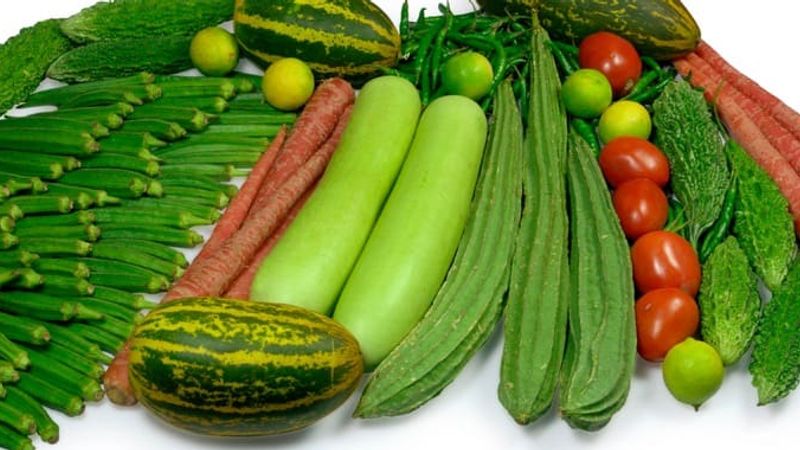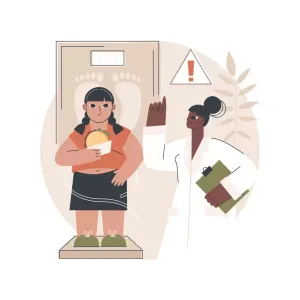

Our Review Process
Our articles undergo extensive medical review by board-certified practitioners to confirm that all factual inferences with respect to medical conditions, symptoms, treatments, and protocols are legitimate, canonical, and adhere to current guidelines and the latest discoveries. Read more.
Our Editorial Team
Shifa Fatima, MSc.
Author
Dr. Apoorva T, MHM.
MEDICAL ADVISOR
Glycemic Index of Indian Vegetables
In the earlier days, diabetes was more commonly restricted to the older population above the age of 40 years. The overall prevalence of type 1 diabetes (the type that can affect younger people) was also low in the earlier days, however, the increasing incidents of diabetes in today’s times have set an alarm for caution for everyone. Many people are affected by diabetes and it is causing severe distress to the mental and physical health aspects. It is a condition that requires a lot of energy to be able to deal with since it plays a role and affects several different parts of one’s life. Along with requiring a lot of energy, it also drains an equal amount of energy.
To be able to effectively take care of and manage the symptoms of diabetes, it would primarily be important to better the food-related aspects. Since diabetes is all about keeping the blood sugar levels under control, the major source of having poor sugar levels is the intake of improper food items. If a person with diabetes can exercise control over unhealthy eating habits, a major portion of the regulation of blood sugars would already be taken care of.
This is why when dealing with diabetes, an individual has to take into account multiple specialists to take guidance from, one of the important ones being a dietician. Soon, words like glycemic index and glycemic load would begin to show importance in their lives as any food that is consumed would be characterized by these factors.
Table of Contents
Foods with a Low Glycemic Index
If the glycemic index or GI is going to play a key role in the life of a person with diabetes, it is important to understand what it means. The nutritional chart of a food item consists of several aspects like carbs, protein content, sugars, minerals, calories, etc. For a person with diabetes, carb counting becomes essential as that figure will determine how much insulin they would have to take for that particular meal. These numbers have to be close to accurate every time to be able to maintain a healthy range of blood sugars.
Along with carb counting, the glycemic index also comes into play. The glycemic index would be an indicator of how a particular food would affect your blood sugar level. A glycemic index food chart is then a system of assigning a number to carbohydrate-containing foods based on how much and how fast the blood sugar might increase upon the consumption of the food. Understanding the glycemic indices of certain food categories cannot be considered a diet plan in itself but it is an important tool, like calorie and carb counting, that serves as an active guide for planning and choosing the right kind of food.
Foods with a low glycemic index would be preferred for a person with diabetes. A low GI would mean that after the consumption of the food, the blood sugars will not rise very high or fast allowing the insulin (external or produced by the pancreas) to act on the sugar molecules present in the blood. Also read about watermelon is good for diabetes.
How to make use of the Glycemic Index?
Simply knowing the glycemic index or having a low GI foods list might not be enough. Among Indian meals too, having an understanding of how to use this number while planning the portion of the food that needs to be consumed would be equally vital. Here are a few points that can be taken into account while planning a diet chart for a person with diabetes taking into account the GI and other factors:
- The GI rating determines the kind of carbs present but does not indicate the number of carbs consumed. This would be factored in regarding portion control. The portion size would be one of the major considerations to control the blood sugar levels and maintaining weight
- The GI of a particular food may differ when consumed alone versus when eaten with other meals. The hack to this would be to pair a portion of food with high GI with one with low GI to balance the impact on the overall blood glucose. Some foods that are high in their glycemic index might be good for your health as they provide other important nutrients too. Mangoes may have a high GI but also have Vitamin C, folate, vitamin B6, fiber, iron, zinc, calcium, etc. Having a few slices of mangoes, therefore, may not be a bad idea.
- Fat and fibers often tend to reduce the glycemic index of a meal. Consider the overall fundamental concepts of nutrition while taking the GI into account.
Low Glycemic Indian Food Chart
For the Indian diet, the glycemic index food chart may differ according to the options and foods available in the subcontinent. The overall glycemic index range would look like this:
- Low GI foods – 0 to 55
- Moderate GI foods – 56-69
- High GI foods – 70+
Here are some foods with a low glycemic index that are easily available in India and would be safe to consume by a person with diabetes.

Factors Affecting GI
Now that you have an approximate idea of the basic low glycemic index food list, the next step would be to understand the different factors that play a role in affecting the glycemic index of a food.
- Processed carbs – The more the processed carbs, the higher the GI score
- Ripeness of fruits – As the fruit ripens, the sugars in the fruits break down causing the GI to rise
- Preparation – The cooking process can break down carbs leading to higher GI
- Dressing – Any acidic ingredient like lemon might reduce the GI of a meal
- Amylose – The presence of this starch has a lower glycemic index.
Benefits of Food with Low GI
Having an idea of the glycemic index food chart has several benefits:
- They keep you full for longer periods as foods with a low GI are rich in fiber and take longer to digest. They are also often higher in their protein content.
- They also help to improve the overall blood sugar regulation and it is easier to count carbs in foods with lower GI
- Since low GI foods have a lesser number of carbs, they would also require lesser insulin in the body. This would mean lower chances of developing insulin resistance.
- These foods are also better for promoting and managing weight loss. Since they take longer to digest, the urge to binge eat or eat at frequent intervals would be lower.
- Better control and management of blood sugars would also reduce cholesterol levels. This would also help in preventing any heart-related complications.
- Additionally, foods with low glycemic indices would help in the optimal management of blood pressure levels as well.
Also read about watermelon for diabetes.
Bottomline
Not only a person with diabetes but also everyone else should also have accurate and updated knowledge on these concepts of glycemic index and also glycemic load as it would be beneficial to engage in a healthy diet, irrespective of the diagnosis of a condition like diabetes. The healthier the diet, the lower the chances of developing complications like blood pressure, cholesterol, etc. If you are living with diabetes, foods with low GI would be the ones to look out for as they would help manage and control the symptoms in the best possible manner. Also know about the glycemic index chart of Indian foods.
FAQs
What is a Low GI Diet?
A low GI diet would be one wherein a person only consumes foods that have a low glycemic index. However, this is not a recommended practice as one may be depriving themselves of essential nutrients and minerals. Hence along with choosing foods with a low GI, it is also important to ensure that your diet contains all the components required for a balanced diet.
What are the Best Low GI Foods?
Some examples for Foods with Low GI are - Whole Grains, Nuts, Legumes, Vegetables without starch, Green Vegetables, Kidney Beans and Chickpeas.
Disclaimer
This website's content is provided only for educational reasons and is not meant to be a replacement for professional medical advice. Due to individual differences, the reader should contact their physician to decide whether the material is applicable to their case.








